From an eerie palace over the “Gateway to Hell” to a fortress once inhabited by little blue-haired girl to a derelict structure frequented by a creature who reeks of sulfur, Musement takes a look at ten of the world’s most haunted castles.
With Halloween approaching, some spooks are in order. So, here’s a look at ten of the world’s most haunted castles. To read where you can find the lady in green, follow in the footsteps of a gruesome witch hunt or keep an eye out for a headless drummer, scroll down…if you dare. (Mwahahaha!)
1. The Tower of London
The skyline of London juxtaposes iconic landmarks like Tower Bridge and St. Paul’s Cathedral with newer additions like the Gherkin and the Shard skyscrapers. Among these stands one stalwart that has endured the centuries: The Tower of London. The 11-century structure was once a royal residence and prison, having seen centuries of death, destruction and torture, so it should come as no surprise that it’s one of the world’s most haunted castles.
In 1536, Anne Boleyn, the second wife of Henry VIII, infamously lost her head here, and it’s said that her ghost strolls the castle grounds (with her head still intact). Also of note is the mysterious disappearance of the two princes, Edward V and his brother Richard, in 1483. It’s widely believed their uncle Richard III killed them so he could claim the throne for himself. They’ve been spotted in their nightgowns wondering around the Bloody Tower as well as playing together on the grounds. Visitors have even reported hearing their laughter echoing inside the palace walls.
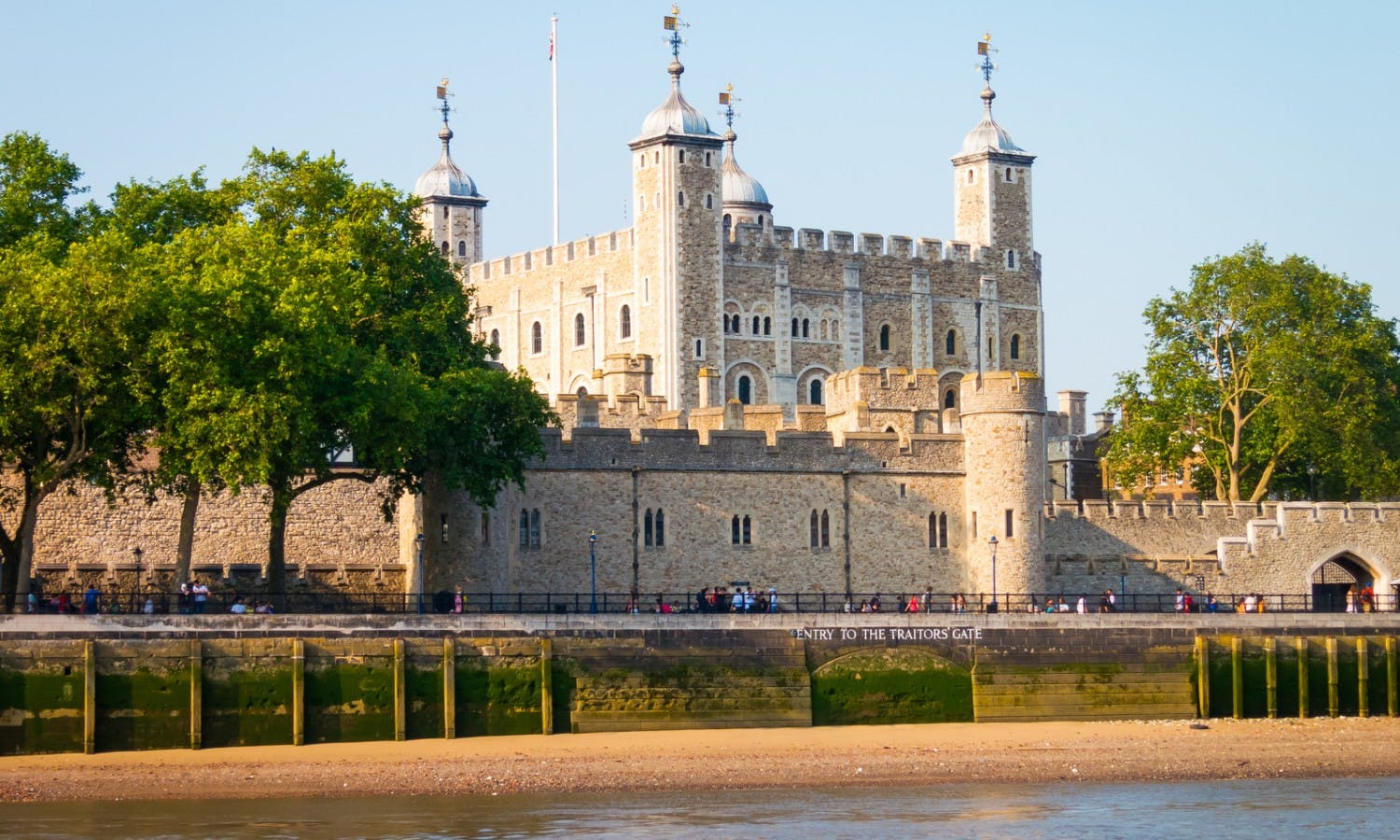
The Tower of London
2. Houska Castle Czech Republic
Houska Castle, a thirteenth-century Gothic palace, is approximately 30 miles north of Prague. What makes Houska Castle particularly unusual is the bottomless hole it’s built around, believed to be the “Gateway to Hell”. An eerie tale recounts how once upon a time, a prisoner was offered a pardon in exchange for being lowered into the hole and reporting back on what he saw. After a long period of silence, he started screaming and emerged from the hole stark raving mad with white hair. He sadly died soon after–so much for his pardon. Others who have risked this same descent have reportedly experienced the same behavior.
Since it was constructed to ward off demons, no one ever lived here, though the Nazis did set up shop here and carried out some of their wicked experiments onsite. Additionally, demonic creatures have been seen flying around the grounds, and a woman in white has been spotted at the window. Just all around creepy.
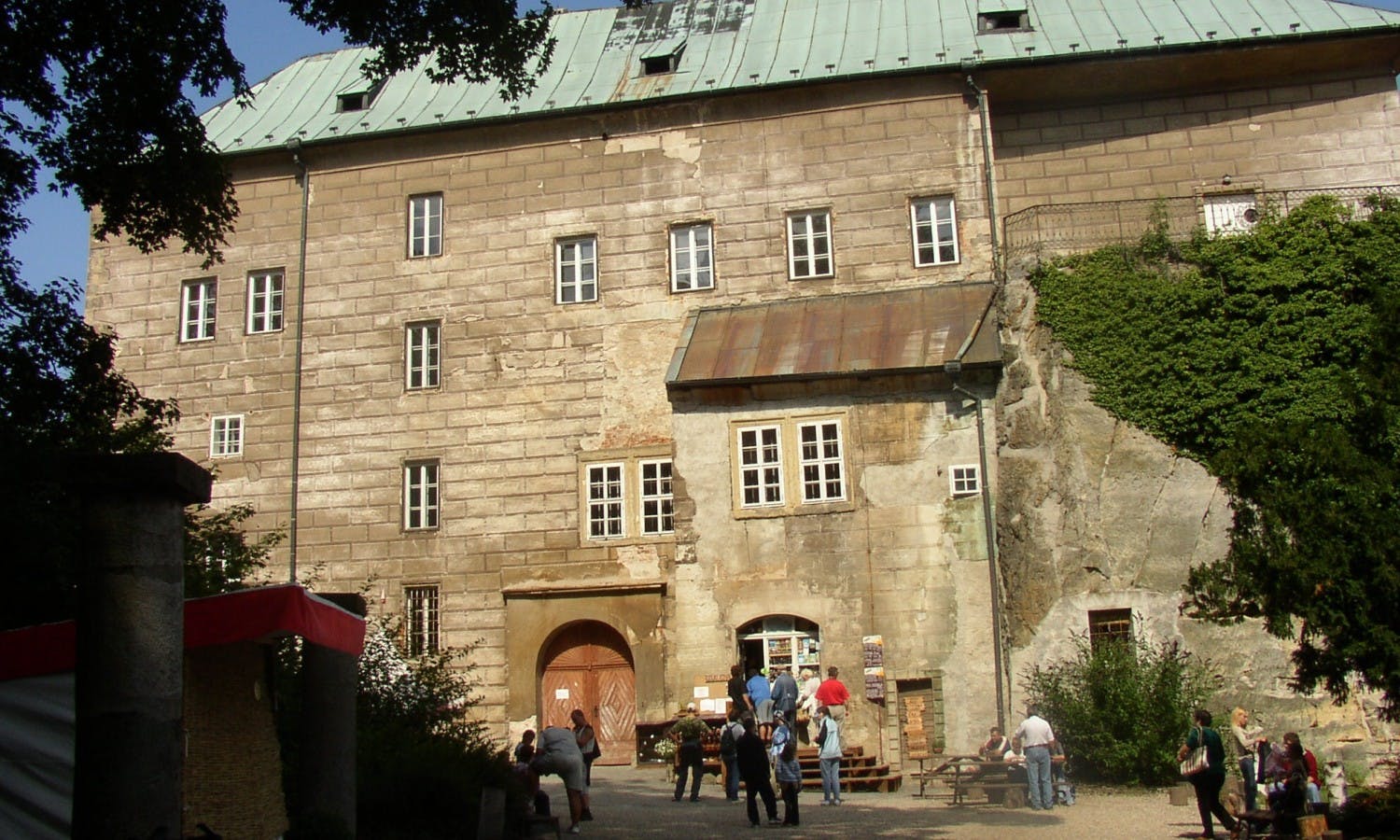
Houska Castle, Czech Republic; photo: Mirek256
3. Montebello Castle, Italy
The legend of Azzurina is the heart-breaking tale of Guendolina, an albino girl who lived in Montebello Castle with her parents. Since albinoism was considered a stigma, Guendolina’s mother would dye her hair with natural herbs that turned it a blue shade, earning her the nickname Azzurina. Forbidden to leave the castle, the girl remained under the constant supervision of specially appointed guards. On 21 June 1375, she never emerged from the basement after heading down there to retrieve a toy. Mysterious yes, but it’s believed it was her father who did her in. Her screams can apparently be heard during every subsequent summer solstice.

Montebello Castle, Italy
4. Brissac Chateau France
Located in the Loire Valley, the 11-century Chateau du Brissac, France’s tallest castle, was the scene of a horrific double murder in the 15th century. Jacques de Breze stabbed his unfaithful wife Charlotte and her lover, Pierre de Lavergne, when he caught them in a compromising position. He eventually left the castle for good because even though they had departed the physical realm of this world, their ghosts stayed behind to haunt him with their moans. Nowadays, Pierre hasn’t been spotted in quite some time so he is believed to have moved on. The “Woman in Green” however, presumably Charlotte, is the chateau’s resident ghost, usually seen in the chapel’s tower room.
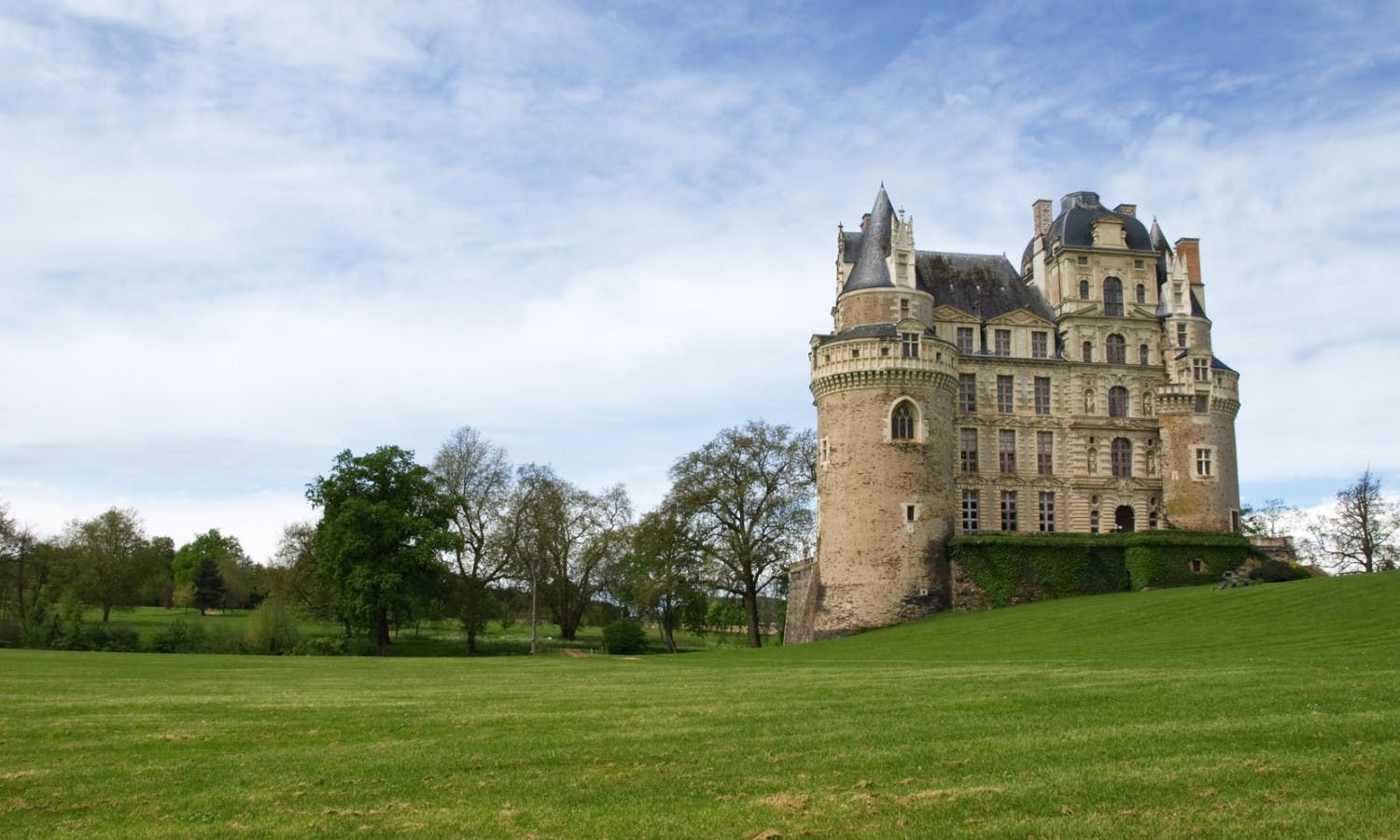
Chateau de Brissac, France
5. Castle Bran, Romania
The 13th-century Castle Bran contains everything that ghost lore is made from and more! Just the mere sight of its towers protruding from the Carpathian mountains is foreboding enough. In Bram Stoker’s Dracula, the titular blood-sucking count–inspired by the brutal, bloodthirsty king Vlad the Impaler–inhabits a castle that bears an uncanny resemblance to Bran. As a result, the castle is known as Dracula’s Castle even though Stoker never set foot in Romania. Locals milk this connection for all it’s worth with Dracula-themed everything, yet paranormal activity is said to have occurred here.
Today, the castle is a museum that houses art and furniture that belonged to Queen Marie, the inhabitant who is believed to haunt the castle. After her death, her heart was locked inside a gold box that is kept in the chapel. Legend says that if you climb to the top of the castle’s tallest tower during a full moon, her ghost will throw you to your death. Note: Despite what you might read, Vlad the Impaler didn’t actually live at Castle Bran; he did indeed reside in Romania but at Poenari Castle.
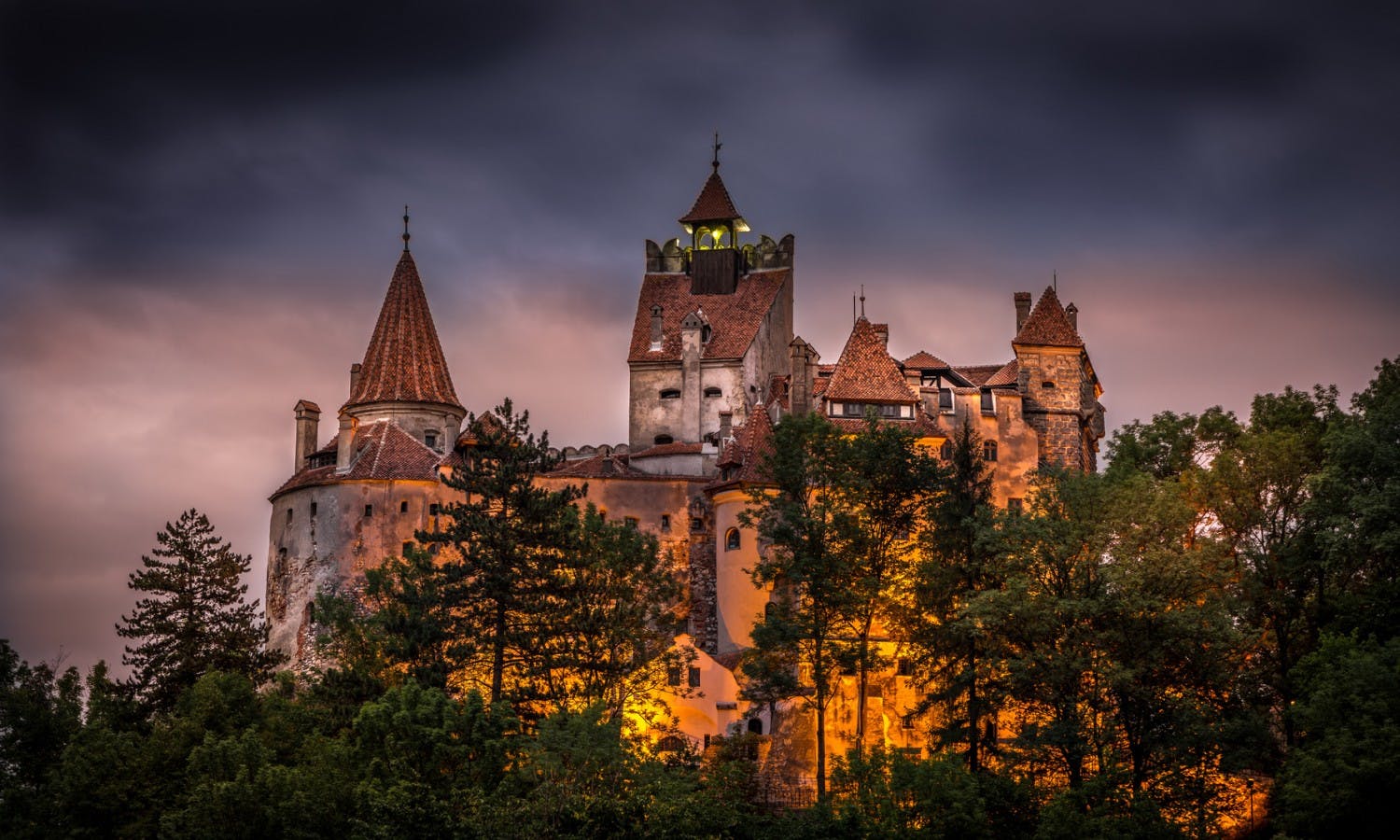
Castle Bran AKA “Dracula’s Castle”, Romania
6. Edinburgh Castle, Scotland
The sinister Edinburgh Castle looms ominously over the Scottish capital from its cliffside perch. One of the most haunted buildings in one of the world’s most haunted cities, Edinburgh Castle counts an eclectic cast of supernatural characters for residents. On any given day, it’s not unusual to see a phantom piper, a headless drummer, French prisoners from the Seven Years War and colonial prisoners from the American Revolutionary War. Be prepared: You might notice a sudden drop in temperature or feel something–or someone?–brush up beside you or tug on your clothing. One of the largest paranormal investigations in history took place here in 2001.
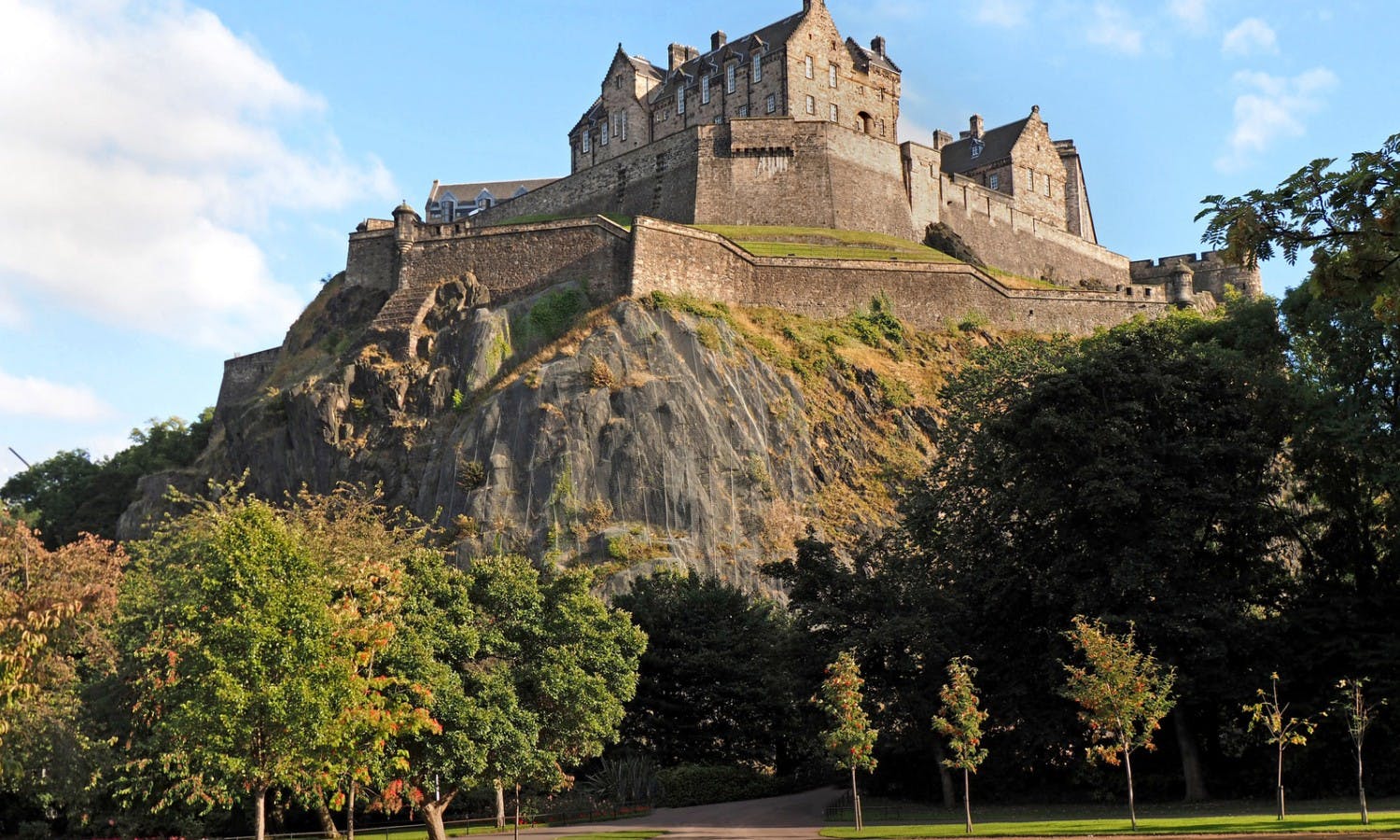
Edinburgh Castle, Scotland
7. Castle Leap, Ireland
This 13th-century castle built by the O’Bannon clan has been on practically every paranormal activity/ghost hunting television show out there. During the 15th-century, a man killed his brother, a priest, while he was holding mass in what was subsequently nicknamed the Bloody Chapel. Over the years, numerous people were imprisoned, tortured and executed here. During restoration work, three cartloads of human bones and a pocket watch were reportedly removed from a dungeon with a spiked floor.
As if that wasn’t enough, a girl named Emily fell from the top tower in the 1600s, Her ghost is often seen reenacting her fatal swan dive, though disappearing before she hits the ground. Other ghosts include a decaying sheep-like spirit that smells like sulfur; a burly man who has been spotted in the priest’s house that was destroyed in 1922; the “Red Lady” carrying a raised dagger as if she’s about to stab someone, and many more. Visits are by appointment only.
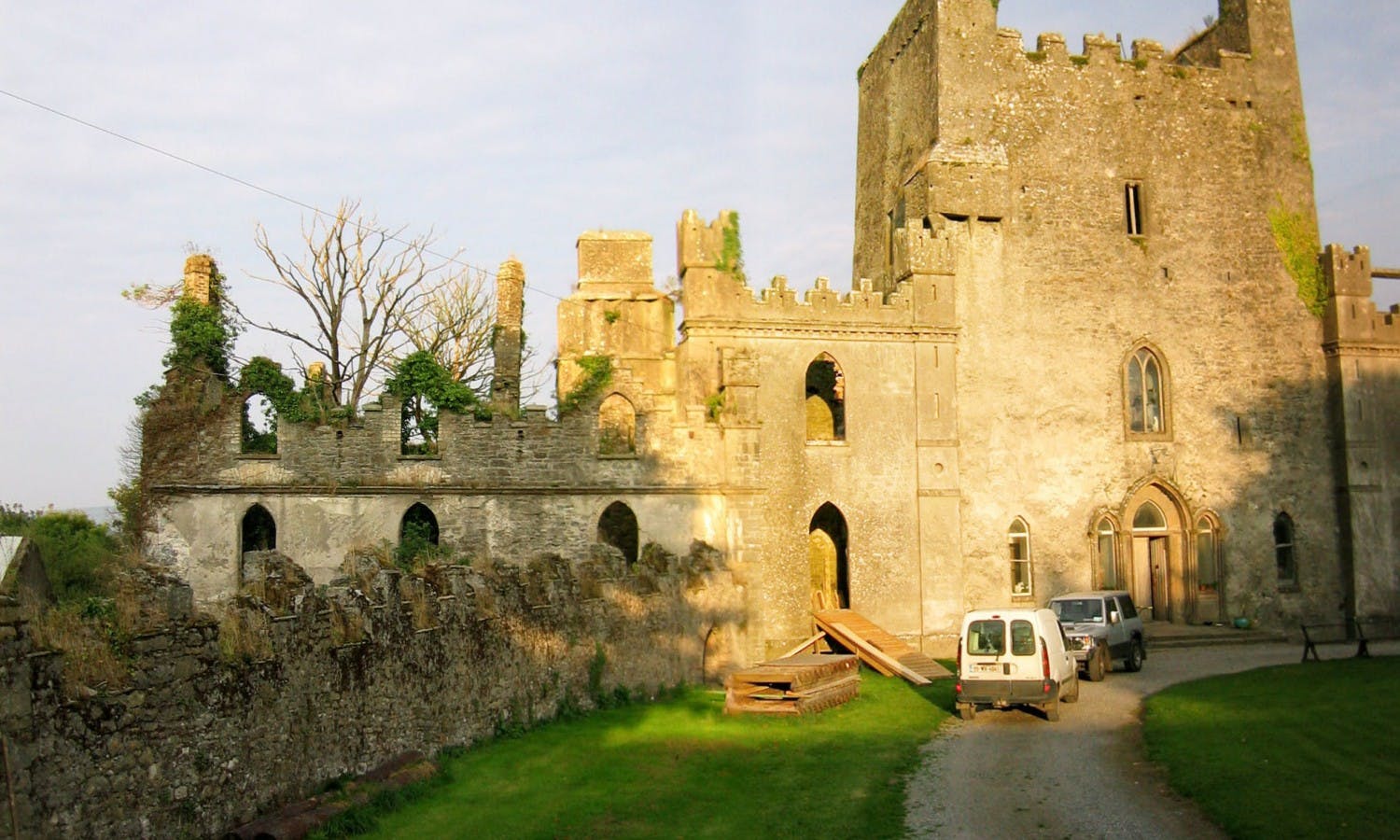
Castle Leap, Ireland; photo: D. Brands
8. Moosham Castle, Austria
Salem, Massachusetts wasn’t the only city to unleash a brutal witch hunt; the one in Unternberg, Austria might have been even crueler and bloodier. Unternberg’s archbishop imprisoned countless women and girls suspected of witchcraft at Moosham Castle, where they were tortured and murdered in some of the most ghastly and gruesome ways imaginable. No one knows for sure how many women died, but the number is believed to be in the ten-thousand range. Many of their spirits are believed to roam the grounds and halls of the 12th-century castle. Today, most of the rooms remain in their original state, and visitors have reported seeing apparitions before their very eyes. Many have sensed another presence beside them and even claim to have felt a touch as they tour the property.
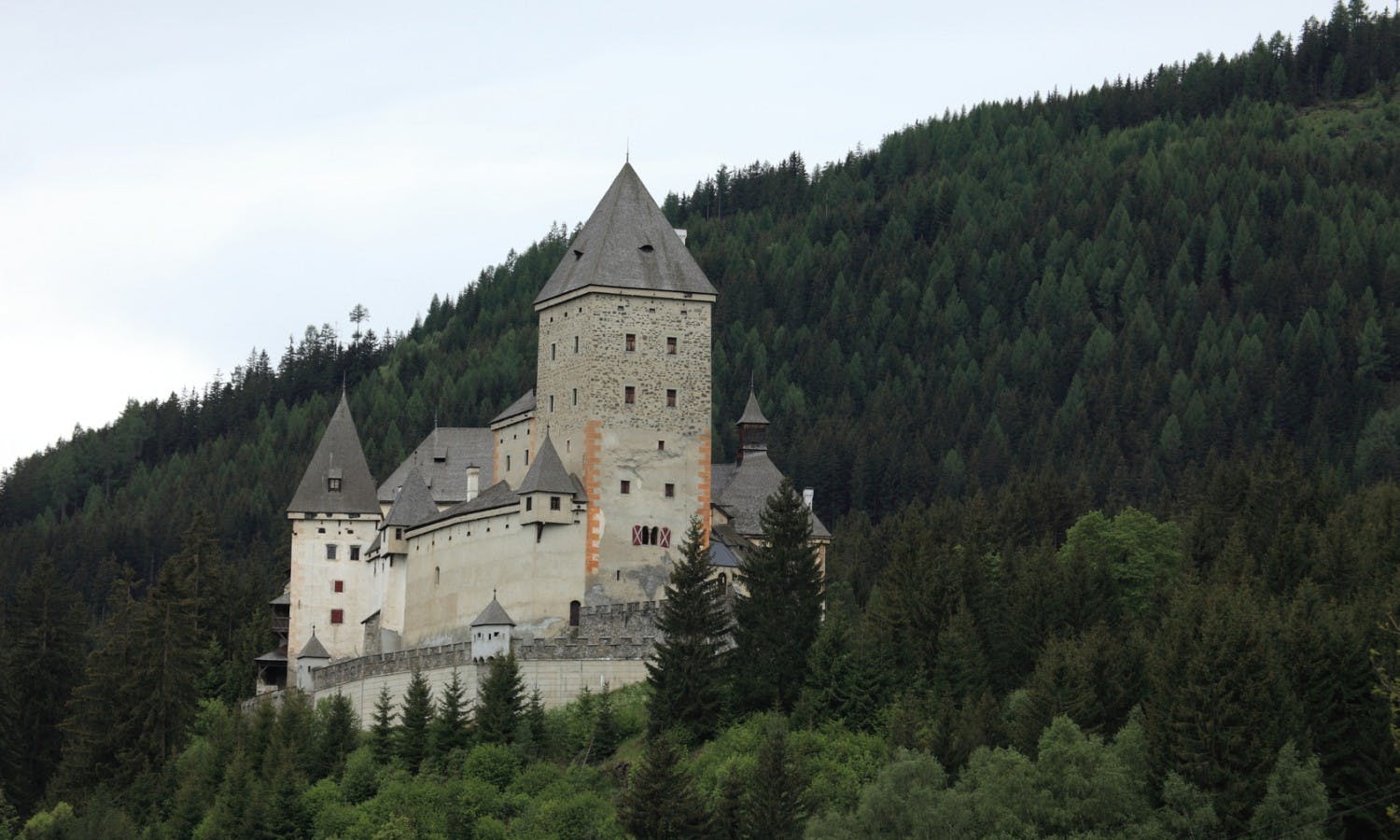
Moosham Castle, Austria
9. Frankenstein Castle, Germany
Another castle that channels the golden era of Gothic/Romantic English literature, Frankenstein Castle is believed to have inspired Mary Shelley’s iconic novel Frankenstein. The remains of this 13th-century castle overlook Darmstad, and its name refers to an ancient German tribe called “Frank” while “stein” is a standard German naming term. The ghost of Johann Konrad Dippel haunts the castle, a physician and alchemist who moonlighted as a body snatcher. He wanted to resurrect the dead by creating an immortality elixer from bits and pieces of their corpses. His potion ironically–but not surprisingly–killed him in 1734. He’s usually seen sitting on the chapel roof between Christmas Day and the New Year.
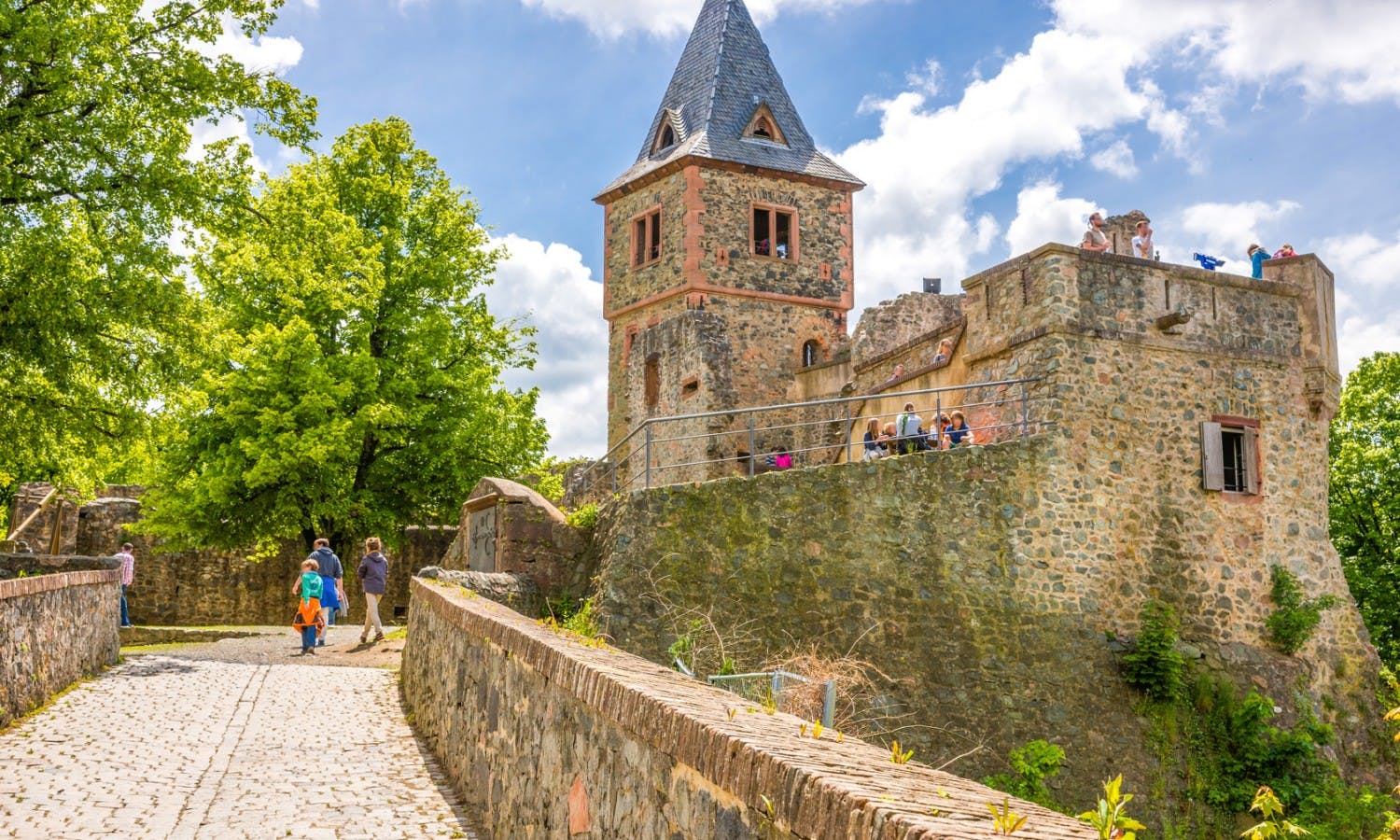
Frankenstein Castle, Germany
10. Castle Reszel, Poland
This red brick Gothic structure might appear warm and welcoming at first glance, however, terrifying things have happened inside Castle Reszel’s walls. A woman named Barbara Zdunk was held captive there after being accused of arson and witchcraft in 1807. She was burned at the stake in 1811, but not before years of rape, torture and tormenting. She apparently gave birth to children though no one knows what exactly happened to them. It’s said that her and the children’s ghosts still linger in the dungeons. Though it’s unclear whether or not she was an actual practitioner of witchcraft, she is believed to the last person executed for witchcraft in Europe. Today, the castle a hotel. Stay at your own risk….just maybe request a room as far away from the dungeons as possible.
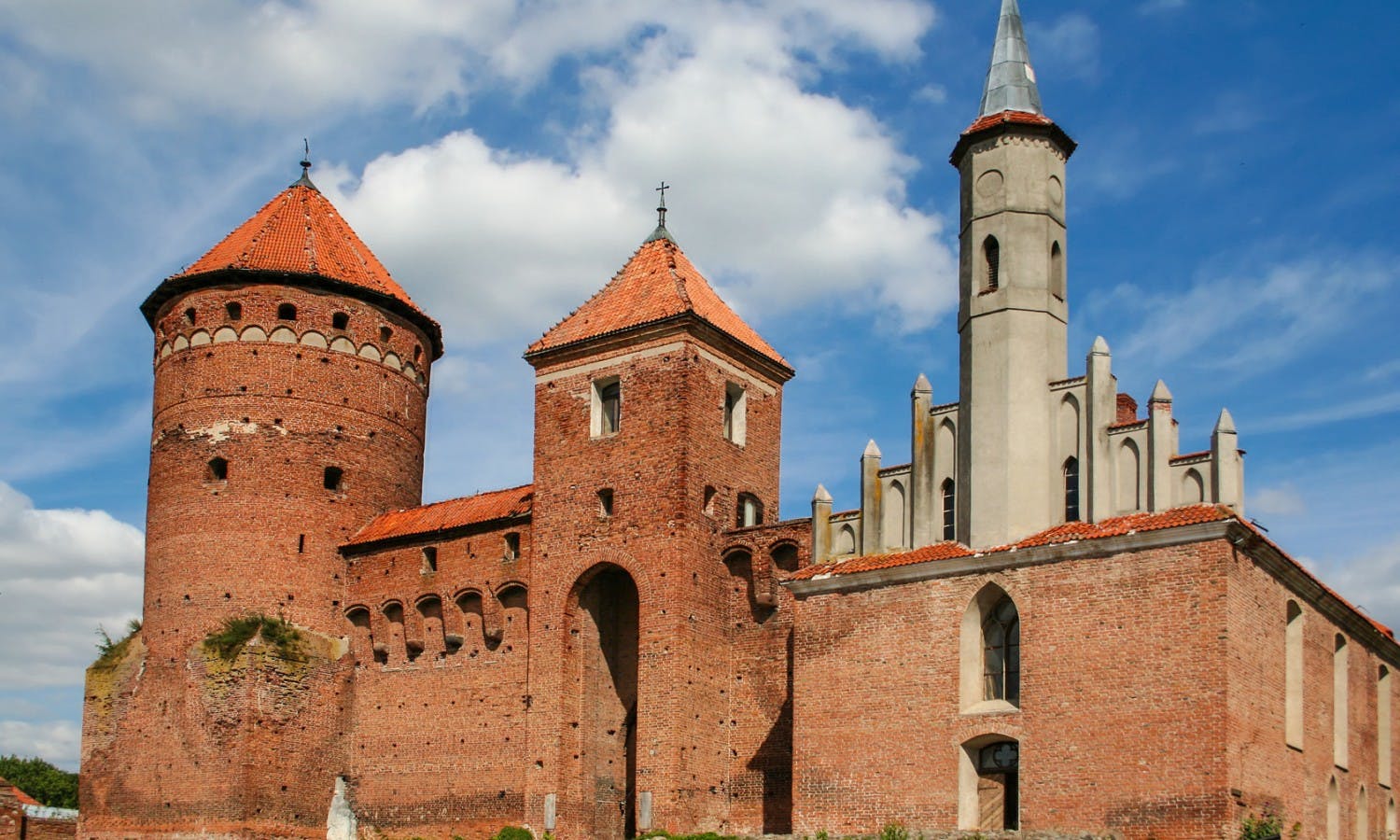
Castle Reszel, Poland
